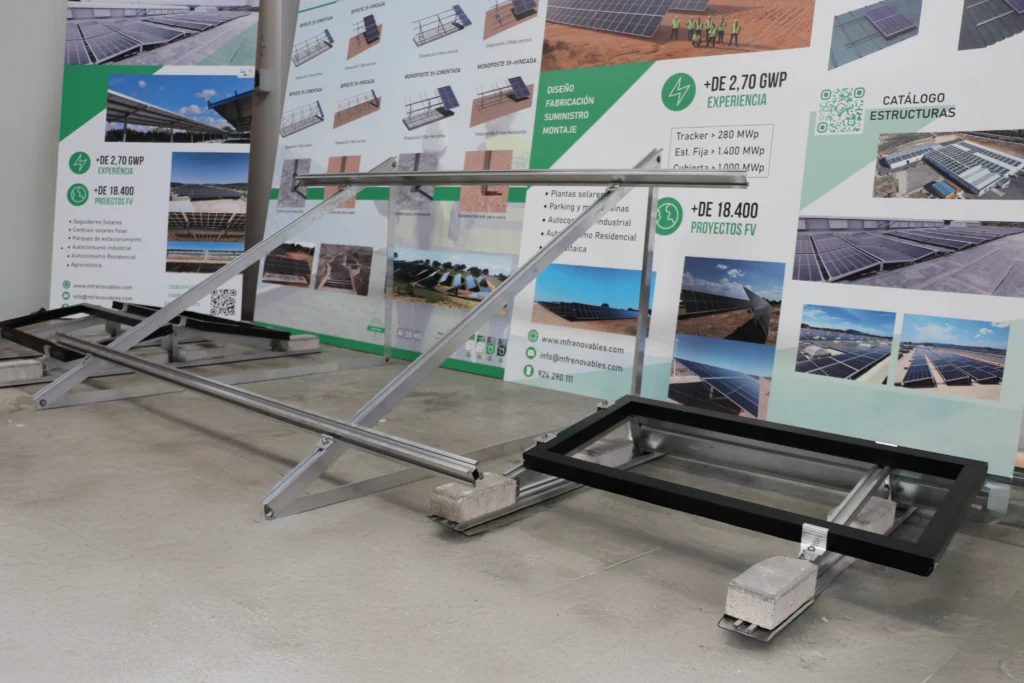

Agrovoltaics is gaining ground in the agricultural and energy sector as an alternative to conventional
solution that combines food production and clean energy. But beyond
environmental benefits, many farmers, investors and companies are wondering:
Is agrovoltaics profitable? In this article, we look at the main factors
the return on investment (ROI) and the available incentives that make the
this technology a viable option.

Agrovoltaics involves the combined use of the same area of land for both
for agricultural production, as the main use, such as for the production of
electricity through a photovoltaic system, as a secondary use. Unlike
Conventional photovoltaic installations, this system is designed to
coexist with crops, providing mutual benefits for both production
agricultural use and for renewable energy generation.
The photovoltaic modules are installed at a height and orientation that allow for
sufficient light to allow crops to grow properly.
In addition, some systems may include solar trackers that optimise the
energy capture without compromising plant photosynthesis.
The profitability of an agrovoltaic project depends on a number of factors ranging from
the initial costs up to the revenues generated from the sale of energy and the
agricultural benefits.
– Installation costs: Includes the purchase of photovoltaic modules,
support structures, monitoring systems and tracking technology.
monitoring.
– Type of crop:Some crops respond better to partial shade, which
can increase yields.
– Energy production:It will depend on the local solar radiation and on the size of the
la instalación.
– Grants and subsidies:Government programmes can reduce
significantly the initial cost.
– Maintenance and operation:: Although solar systems require little
maintenance, it is important to consider it in the ROI calculation.


The rapidly evolving nature of renewable technologies calls for a
constant updating of skills. Continuous training and collaboration with educational institutions are essential to ensure that the available talent is aligned with the needs of the sector.
1. Sale of energy to the grid (PPA - Power Purchase Agreement):
Agrovoltaic projects can sell the energy generated to the grid at a price of
through long-term contracts. This is one of the main sources of income for
farmers and system operators.
2. Self-consumption:
The energy produced can also be used to reduce the electricity consumption of the
agricultural operation, such as in irrigation systems, greenhouses or machinery.
3. Improvement of agricultural yields:
In many cases, the partial shading of the modules reduces water stress and
increases yields of crops sensitive to direct radiation.
4. Income diversification:
By combining food production with energy generation, the farmers
can mitigate financial risks and ensure stable incomes even in years of
low agricultural production.
Let's imagine an agrovoltaic project on a 10 hectare farm, where a
an elevated photovoltaic structure for the cultivation of vegetables, type AGR-H.
Initial data:
- Initial investment: EUR 4.5 million (modules, structures and
installation).
- Grants: EUR 300,000 (through support programmes for the
implementation of renewable energies).
- Energy production: 1.5 GWh per year.
- Energy sale price: 0.10 euros/kWh.
- Crop yield increase: 10% due to partial shade.
Cálculo de ingresos anuales:
– Venta de energía: 1,5 GWh × 0,10 euros/kWh = 150.000 euros/año.
– Ahorro en costes eléctricos: 25.000 euros/año (reducción del consumo
eléctrico en la finca).
– Venta de producción agrícola: 560.000 euros/año (suponiendo un precio
percibido por el agricultor de 1,40€/kg y una producción de 40.000kg/ha)
– Ingresos adicionales por mayor producción agrícola: 5.600 euros/año.
Cálculo del ROI:
Inversión neta: 4.500.000- 300.000 (subvenciones) = 4.200.000euros.
Ingresos anuales totales: 150.000 + 25.000 + +560.000+5.600= 740.600euros/año.
ROI estimado: 4.200.000/740.600= aproximadamente 5,6 años para recuperar la
inversión.
In countries such as Spain, France and Germany, there are numerous programmes of
subsidies and aid for the implementation of agrovoltaic projects.
Examples include:
– European funds for rural development (EAFRD).
– National renewable energy incentives.
– Programmes to support agricultural sustainability.
These grants can cover between 20% and 50% of the initial investment, reducing
considerably the time needed to achieve profitability.
5. Economic benefits beyond ROI
In addition to the direct return on investment, agri-voltaics offers the following benefits
indirect economic benefits:
- Increase in land value: The installation of agrovoltaic systems
can increase the value of the land.
Protection against fluctuations in the agricultural market: By diversifying the
income, farmers reduce their exposure to volatile commodity prices.
agricultural products.
- Climate risk reduction: Protected crops under modules
photovoltaic systems are less exposed to extreme weather events.

Agrovoltaics is not only a technological solution, but also a comprehensive model for addressing the challenges of climate change and promoting sustainable development in rural areas. Its ability to reduce emissions, conserve natural resources and improve the rural economy makes it a key tool in the fight against climate change. With adequate support in public policy and financing, its adoption can make a significant difference globally.
In future publications, we will explore the technological innovations that are driving its development and the investment opportunities for smallholder farmers.

Thanks to the combination of revenues from the sale of energy, cost savings
and the incentives available, agrovoltaics is emerging as a viable option.
economically viable for farmers and investors. In addition, its potential for
improving food security and sustainability makes it a solution
for the future.
In future publications, we will look in more depth at business models and strategies of
specific funding.





